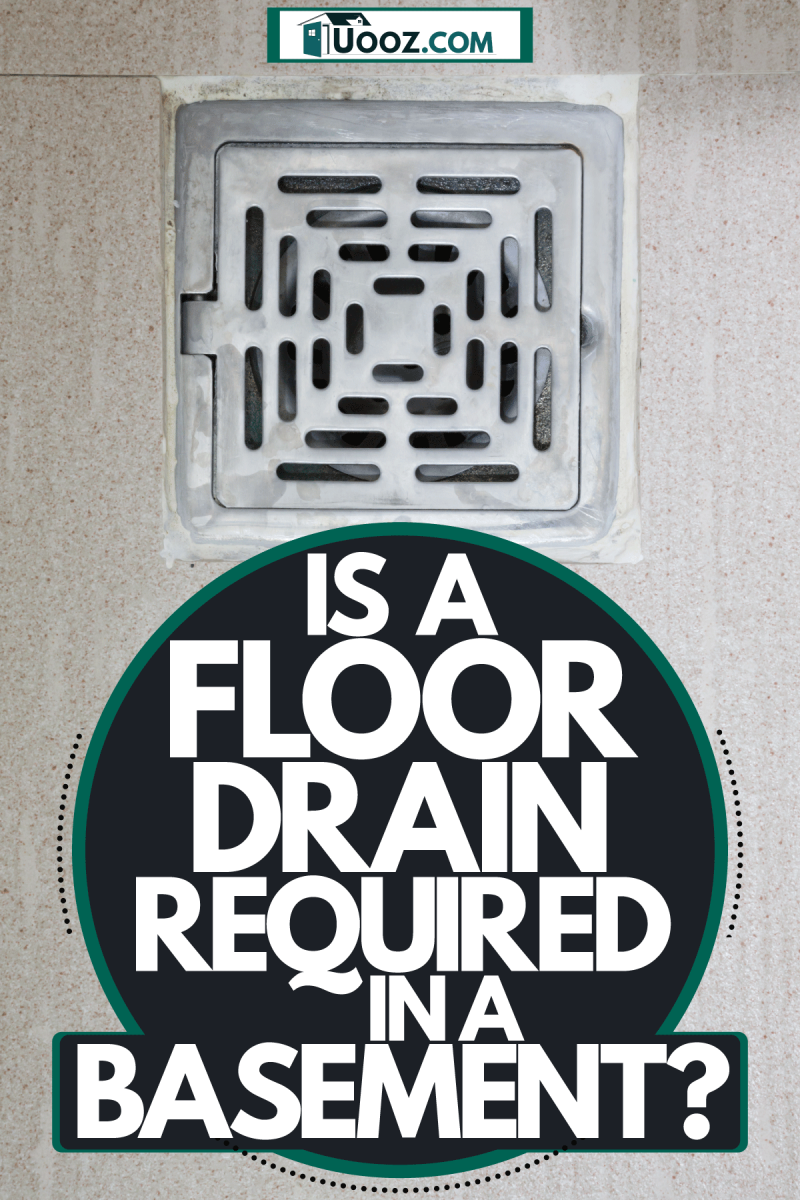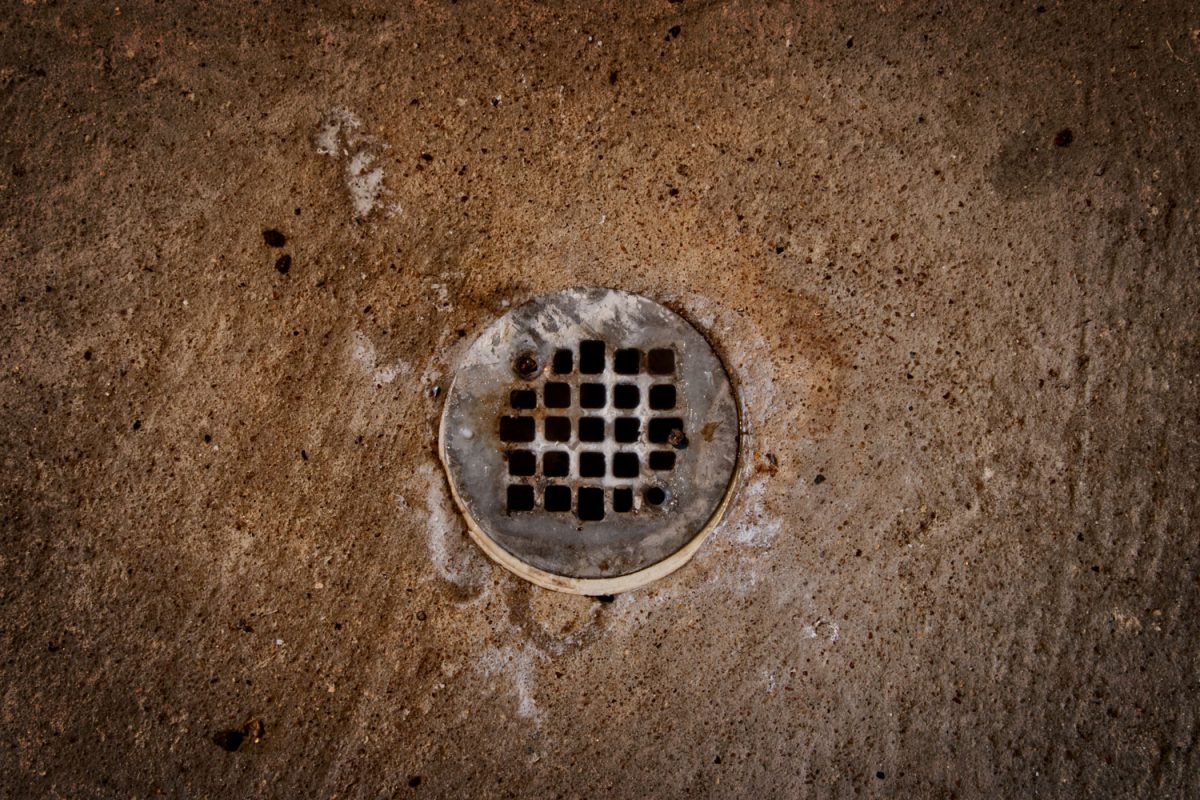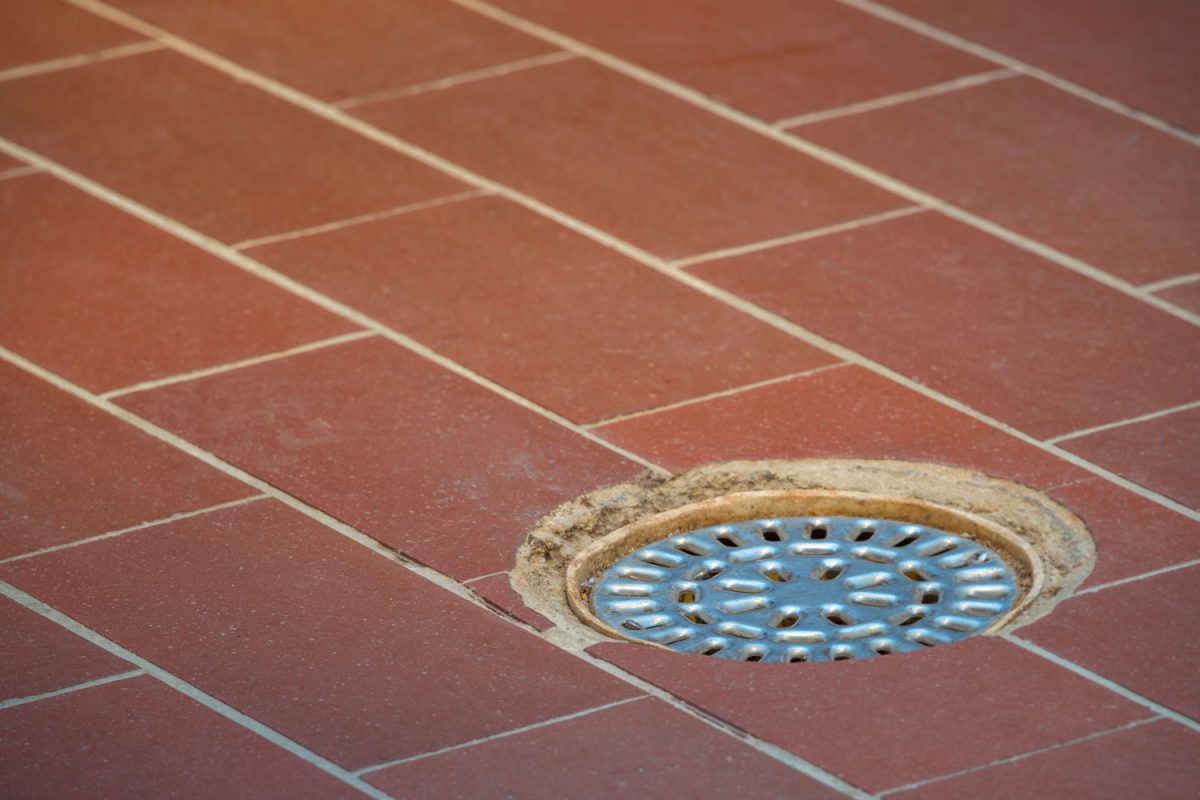It is rare for a home not to have a floor drain in the basement, even if the floor has a finished carpet or hardwood surface. Floor drains are essential to the upkeep of a home, providing an outlet for unwanted wastewater, leaks from appliances and preventing flooding. We researched the requirements for floor drains in basements, the benefits, and why they are necessary.
According to building codes, a floor drain in the basement is required to safely drain unwanted or excess water from a home. Typically, a floor drain will connect to the local sewer system or link to a collection pit where the wastewater can be carried away. Especially if a basement has a finished concrete floor, a floor drain must be installed. Thankfully, most drains are installed in a home's basement upon its construction.
Drains may seem like an unattractive unnecessary item in a finished basement, but they are beneficial to keeping a home safe, sanitary, and dry. Continue reading to learn why a floor drain may smell bad, how often to clean drains, and how to cover them safely.

Basement Floor Drains Are Essential
Older homes may have been grandfathered in before building codes enforced the construction of a basement floor drain. However, it is vital to properly install drains in the basement to prevent flooding, remove backflow, water from broken appliances, and reduce exposure to sewer gas.

Even when a basement has a finished floor, a drain is necessary in case of an emergency and for a home's maintenance.
Expect the floor drain to connect to municipal sewage systems to remove wastewater, or it will connect to a collection pit where a sump pump can send the water where it needs to be treated. If a floor drain begins to smell rank, is coated with debris, or runs dry, it cannot be left in such a state for too long. A clear floor drain is helpful to keeping a home clean and preventing damage from sewage, water, or accidents.
What Is The Purpose Of A Basement Floor Drain?
A floor drain for the lowest part of a home, the basement, is necessary to remove unwanted water quickly. At times, a leaking water heater, torrential rains, and sewage problems can lead to water flooding the basement. If a drain is not present in the basement, removing large amounts of water becomes a difficult ordeal.
Blocked drains, flooding, and broken fixtures can all lead to water damage if left unchecked. A drain on the basement floor is beneficial because it keeps the basement sanitary, alerts a homeowner to problems with plumbing, and reduces the chance of water damage.
In most homes, the floor drain is automatically included with a basement. It is essential to check the basement floor drain because grime and debris can accumulate over time, and foul odors may develop. The state of a floor drain can quickly clue you in if there is a problem with a connected sewer connection, a sump pit, or a clog.
Routine checkups allow you to spot damaged parts that need replacing. Usually, a floor drain in the basement is placed nearby the water heater and boiler in case of a problem, so there is an outlet for water.
Check out this stainless steel floor drain on Amazon.
Can I Cover A Basement Floor Drain?
If you are interested in covering a floor drain because you want to remodel the basement, that is best left up to a professional plumber and contractor. It is possible to cover a basement floor drain, but it should be done with something removable.
The point of a floor drain is to prevent sewer gas from backing up into the connected space, reduce the chances of flooding, and provide an outlet for unwanted water to drain. Before you choose to cover a drain, know what it is connected to and where any standing water will go.
Typically, a floor drain will be connected to a city's sewage system, but it also might connect to a sewage pit or sump pit. When a drain begins to smell foul, it is a sign that there is a need for maintenance and cleaning. Clogs, backed-up sewers, and backflow may make a homeowner rush to cover up or plug the drain. In most cases, this is a temporary fix.
It is possible to seal a drain, especially if you want to finish a basement with a carpeted floor. However, be advised it is best to give water in your basement somewhere to go. To preserve future access to the drain, opt for a lid or cap.
Check out this drain cover on Amazon.
Is A Basement Floor Drain Connected To A Sanitary Sewer?
Usually, a basement floor drain will connect to a sanitary sewer to prevent toxic, malodorous gasses from entering your home. If a home happens to be built lower than the sewer line, a floor drain may connect to a sump pump or sewage pit instead of a sanitary sewer. The most important thing about a floor drain connection is that it should quickly route any harmful sewage, gas, or dirty water away from the home.
Why Does My Basement Floor Drain Smell?

When you enter the basement, and a rank odor hits your nose, chances are the floor drain needs some attention. A foul smell can come from a floor drain in the basement because of a damaged sewage line, a dried-out drain, a bad ejector pit seal, and even poorly vented appliances. The cleanout plug inside the drain may need to be replaced and could be harboring foul odors.
If the P-trap in the drain is dry, you can stop the sewer gas smell by adding more water to replenish the water barrier. Don't forget to add a little bit of baking soda and vinegar down the train to help neutralize foul odors.
Remember, one of the simplest methods to remove a bad smell from the floor drain is to pour hot water down the drain to clean the plumbing. Avoid pouring bleach down the drain to remove any unpleasant odors. It is corrosive and emits noxious fumes that can linger in the basement.
Check out this floor drain that blocks odors and bugs on Amazon.
How Often Should Floor Drains Be Cleaned?
Do yourself a solid and schedule routine cleaning for floor drains once every four months. Look over the drain and remove any lids or caps. Clean off any visible debris. Pour a good amount of hot, boiling water down the drain and wait 15 minutes. Follow up with baking soda and a hot vinegar rinse and wait an additional 10 minutes. If you wish, use a commercial drain cleaner to whisk away clogs, buildup, and any foul odors.
If you can't get around to regularly cleaning your floor drains, call in the professionals to expertly clean your drain systems and connected plumbing to prevent clogs and keep things running smoothly. Remember to check up on your drainage, keep fill traps level by pouring in water to replenish the barrier, and don't let clogs or standing water tarry.
Check out this cleaner to remove clogs and odors on Amazon.
In Closing
We hope you learned the value of maintaining clear and functioning drains in the basement. A drain is vital to preventing unwanted water damage, toxic gas, and backed-up sewage from coming inside your home. You may feel it is necessary to cover a drain because of foul odors, but it should be done with a removable lid, cap, or plugin case access is needed.
Most floor drains are connected to a sanitary sewer system, but in some instances, it is linked to a sump pit or sewage pit. Take preventative measures and keep your plumbing running smoothly by routinely cleaning your drain, removing clogs, debris, and refill the water barrier.
Before you go, don't skip out on the following informative articles:




